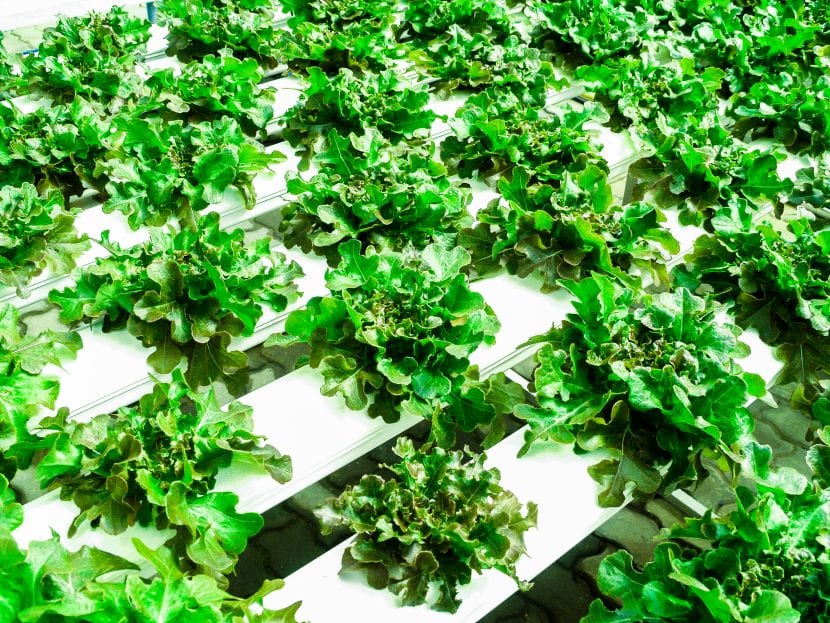
Have you heard of hydroponics and hydroponics? This is a very interesting cultivation system, which offers several advantages compared to traditional cultivation, and in many cases it could be an option for families who do not have land to cultivate their garden but who want to have fresh vegetables.
Understanding this system is not very difficult, but when you want to start it is completely normal that many doubts arise. So in this article I'm going to tell you everything you need to know to start enjoying this curious way of growing plants.
What is hydroponics?
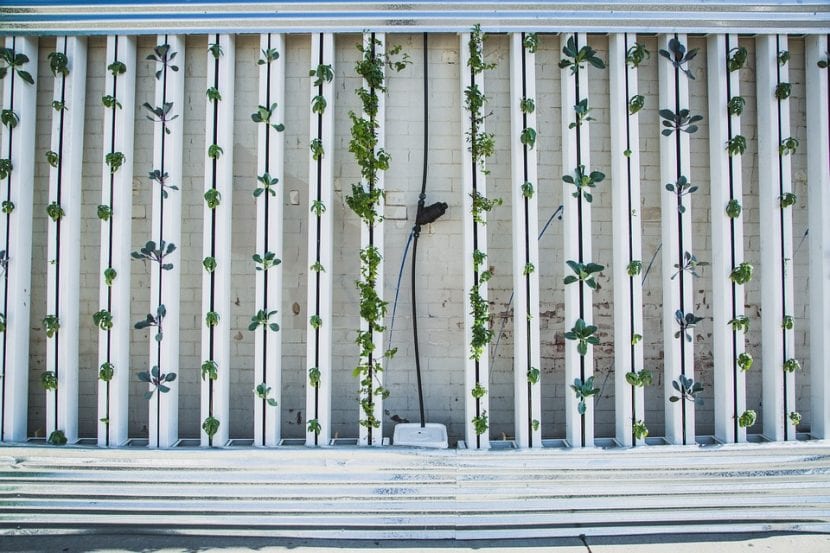
Hydroponics is a word composed of "hydro" which means water, and "ponia" which is translated as labor or work; that is, it is a soilless farming system. Although it has been modernized in recent times, it is known that around 2600 years ago, in Babylon, King Nebuchadnezzar I had the hanging gardens built in which plants were grown in this way.
How It Works
Any plant worth its salt needs light, water and a balanced amount of nutrients. These nutrients are absorbed by the roots on a regular basis, each time they are mixed with water or each time they need it -depending on the type of system you have-, thus achieving very good health and optimal growth.
Although you might think that they can barely grow in this system, the truth is that it will depend a lot on the type of conglomerate and how large the spaces intended for plant beings are. Anyway, it is only recommended to grow small edible plants, such as lettuce, tomato plants, peppers, etc.
Types of hydroponic systems
It can be open or closed:
Open hydroponic system
The nutrient solution is mixed with the water whenever necessary, without being recycled, as for example it is done in the cultivation beds or in the PVC pipes.
Closed hydroponic system
In this system, the nutrient solution circulates continuously, so that the roots can absorb them each time they require it. It is what is done if it is grown in PVC channels, or with the Nutrient Film technique (or NFT for its acronym in English), among others.
What are the essential nutrients for plants?
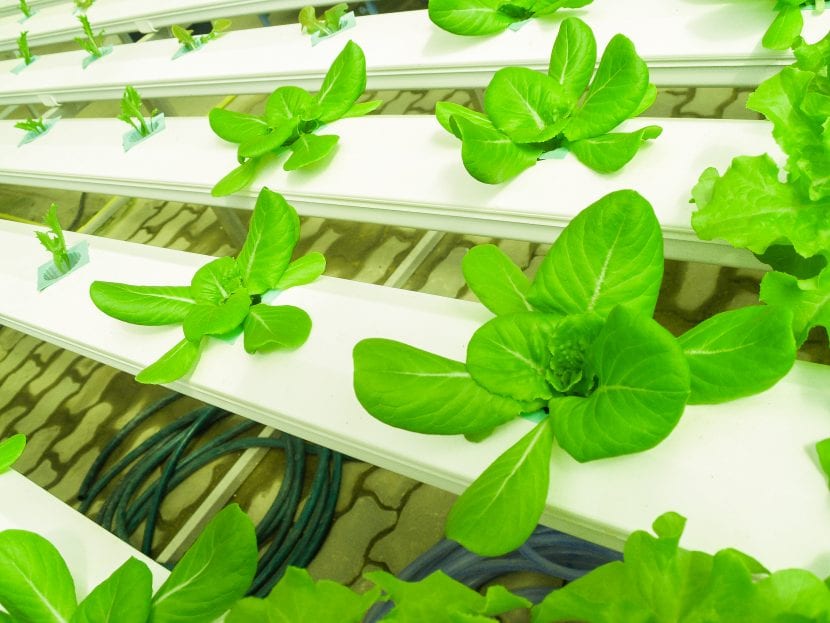
If we want to have our hydroponics system working correctly, it is essential to know what nutrients the plants need, since otherwise we will not be able to pay them properly:
Macronutrients
- Nitrogen (N): They use it to produce leaves and grow.
- Phosphorus (P): It is in charge of stimulating and favoring the growth of roots, flowers, fruits and seeds. It also helps fight disease.
- Potassium (K): helps in the development of the stems, and also to grow.
- Sulfur (S): It is required in the formation of proteins and chlorophyll.
- Calcium (Ca): It is responsible for the ability to perspire, and helps protect against diseases and stress due to high temperature.
- Magnesium (Mg): is essential for the production of chlorophyll, and therefore, for the photosynthesis.
Micronutrients
- Chlorine (Cl): it is necessary for the photosynthetic reactions that oxygen produces.
- Iron (Fe): essential to synthesize chlorophyll.
- Boron (B): it intervenes in pollination and in the use of calcium.
- Manganese (Mn): activates some enzymes, and is necessary to release oxygen in photosynthesis.
- Zinc (Zn): it is part of the compound of some enzymes.
- Copper (Cu): essential for respiration and is necessary for the process of photosynthesis. It also helps to intensify the flavor and color of vegetables and flowers.
- Nickel (Ni): It is in charge of metabolizing urea nitrogen in order to convert it into usable ammonia for plants.
- Molybdenum (Mo): fixes nitrogen and reduces nitrates.
Knowing this, you can make a correct mix of nutrients, depending on the season of the year in which you are.
What are the requirements to be able to have a hydroponic culture?
So that the plants can be growing well and you can enjoy an excellent harvest, it is necessary that you take into account the following:
Location
The ideal site it must be sunny, or at least receive a minimum of six hours of direct light a day. In addition, it is important that it is away from sources of winds, diseased plants and domestic animals.
For a matter of comfort and practicality, it is necessary that there is a source of water nearby and a safe area to store the nutrients.
Temperature and humidity
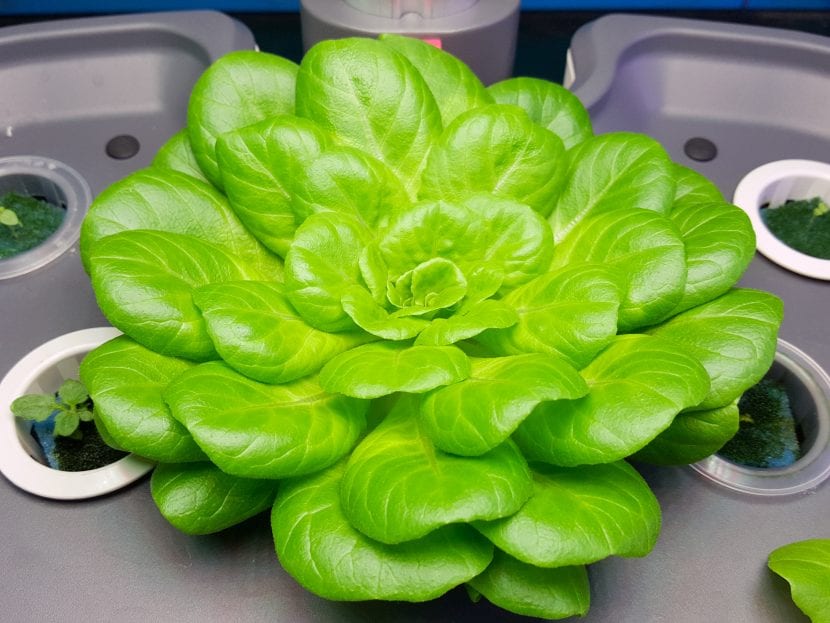
It is advised that the temperature is between 20 and 24ºC, so that the roots can easily absorb the nutrients and the plants are as good as possible. Keep in mind that changes in temperature will lead to some variations in the humidity percentage, which should be between 40 and 60%.
Water
Water is essential for life, and when we want to have our own hydroponic cultivation that statement becomes even more important. Because, It must be as pure and clean as possibleHence, distilled water is preferred, with low electrical conductivity (EC) and low parts per million (PPM) levels.
Also, the pH should be between 5.8 and 6.2, unless you cultivate in soil that will be between 6 and 6.8. The pH measures the alkalinity of a solution on a scale that goes from 0 to 14, being considered acidic below 7, neutral at 7, and alkaline above 7.
Hydroponic fertilizers
Now you will find for sale nutritious solutions for hydroponic crops ready for application, either liquid or powder. What you will see are three numbers, which indicate the proportion of NPK that it contains. Thus, if it is 15-15-15, it is indicating that it contains 15% nitrogen, another phosphorus and another potassium. The remaining 55% is basically water and micronutrients.
Liquid fertilizers simply have to be mixed with water as indicated on the package; On the other hand, those that are in powder may also require a pH regulator.
Lighting design
Plants require light to carry out photosynthesis and, therefore, also to grow, flourish, bear fruit ... and ultimately, to be alive. Knowing this, if you want to have a 100% complete hydroponic system, You should make sure that they receive 15-18 hours of light in full growth, and between 10 and 12 hours during flowering.
How do you get that? With MH lamps. These lamps emit a blue-green spectrum of light, which is ideal for the growth stage. On the other hand, if you are also going to grow cuttings, or short-lived plants, they will do better with T5 lighting, which is a high-performance fluorescent light that has a very low energy consumption.
Make sure it always turns on and off at the same time every day, with the help of a timer, for example. In this way, there will be no imbalances in the development or growth of the plants.
Hydroponic garden size
Available space it's not something you should worry about. There are very small hydroponic gardens, 1m, and there are larger ones up to 200m. So if you do not have a very large place, quiet because you can grow enough vegetables for a few months.
Containers
Actually, Anything non-metallic that is waterproof and has a depth of at least 10cm can do the trick.: tires, plastic buckets, wooden boxes, ... Of course, it is advisable that they are also dark and opaque colors, since algae tend to develop better in those that are light colors.
Substrates for hydroponic crops
The substrates to use must be new, uncontaminated and capable of holding moisture and draining excess water. Likewise, they must be composed of small particles, between 2 and 7mm, and they must not degrade easily. Therefore, the following mixtures are recommended:
- 50% akadama (for sale here) + 50% river sand previously washed
- 60% pumice + 40% arlite (on sale here)
- Clean rainwater
What are the advantages and disadvantages of hydroponics?
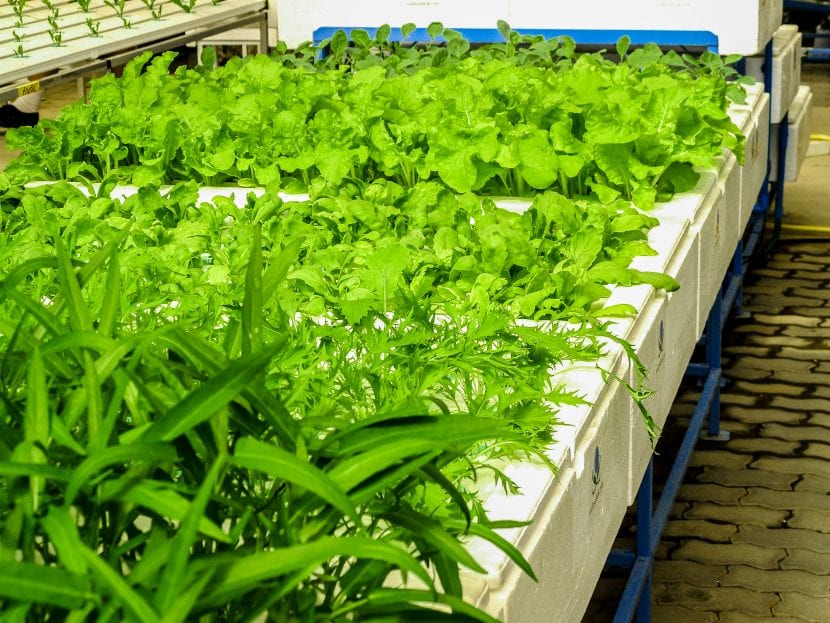
Advantages
The traditional cultivation of plants is a very interesting and educational option, but the truth is that when comparing it with hydroponics, we will immediately see that it has many advantages:
Pests and diseases are prevented
By using clean substrates and water, the appearance of both pests and microorganisms is prevented that cause diseases, and even if there are, it is easier to eliminate them. Therefore, much healthier and stronger crops are achieved.
The same species can be grown over and over again
The nutrients available in the earth are depleted as the roots absorb them, something that forces every gardener, farmer or hobbyist to have to add fertilizers to the soil, fertilizing it. This problem with hydroponics is eliminated, being able to cultivate the same species as many times as we want.
Higher harvests are achieved in the same space
Thanks to you they have several systems in which many specimens can be planted. And since each of them will have the amount of nutrients it needs, we can be sure that they will all mature.
Healthier plants are obtained
As we are in charge of providing them with everything they require, they manage to have a balanced supply of light, air, water and of course nutrients.
No need to use land
Water, as long as it is rainy and clean, is an excellent medium in which plants can grow. What's more, you can completely control the nutrients available, and can be reused by staying in the system.
Disadvantages
But it also has some drawbacks, which are:
A constant water supply is needed
Without water, no plants will be able to grow. Remember that hydroponics means growing without soil, but If you don't have this precious liquid, you won't get anything.
It takes time
To get basic knowledge of hydroponics, to learn everything about the subscriber, to take care of the plants, and for the prevention and treatment of pests and diseases.
Initial investment can be high
A complete and professional kit costs you at least € 400, which is a lot. But it is money that you end up recovering over time, since you will not have the need to spend it on phytosanitary products if you take maximum care of the details, and control that both the water, the substrate and the system are clean. Besides, you also save the cost of buying the food that you, from seeds, are going to get…, and those seed envelopes currently cost 1-2 euros 😉.
How to make a homemade hydroponics?
By now you probably think that hydroponics is reserved only for professionals, but the reality is that it is not entirely true. It does require acquiring some technical knowledge, but that does not mean that this is a world that fans cannot enter. Not at all.
In fact, you can have your own hydroponic garden in a simple 2 liter bottle. You do not believe me? Follow these steps and then tell me 😉:
Materials
- 2l bottle
- Coconut fiber (for sale here)
- 1l of water
- 1-2 wicks of fabric
- Foil
- 1l of fertilizer for hydroponics (for sale No products found.)
- Small vegetable seeds: tomatoes, peppers, lettuce, basil, ...
- Permanent marker
- Scissors
- PH corrector kit
Step by step
- First, clean the bottle thoroughly - with water.
- Next, mark a line with the marker, about 5cm below the hole, where the curvature of the bottle disappears.
- Now, cut the bottle along the line and place the cut part inside, upside down. Fill the lower half with water, until you see that it almost covers the narrowest part of the part that you have introduced.
- Then, if necessary, the pH of the water must be corrected, so that it is between 6 and 6.5.
- The next step is to add the wick, passing it through the mouth of the bottle and making it reach about two thirds of the height of the area that will be used for growth, that is, the top.
- Next, fill the top with previously moistened coconut fiber. Make sure the wick is more or less in the center.
- Finally, sow two or three seeds, leaving them somewhat separated from each other. Later, when they have grown a little - at 2 or 3 weeks after sowing - you will have to leave only one, the strongest.
So that the garden is free from pests and diseases, it is advisable to wrap the bottle with something opaque, like aluminum foil.
Where to buy hydroponic systems?
Amazon
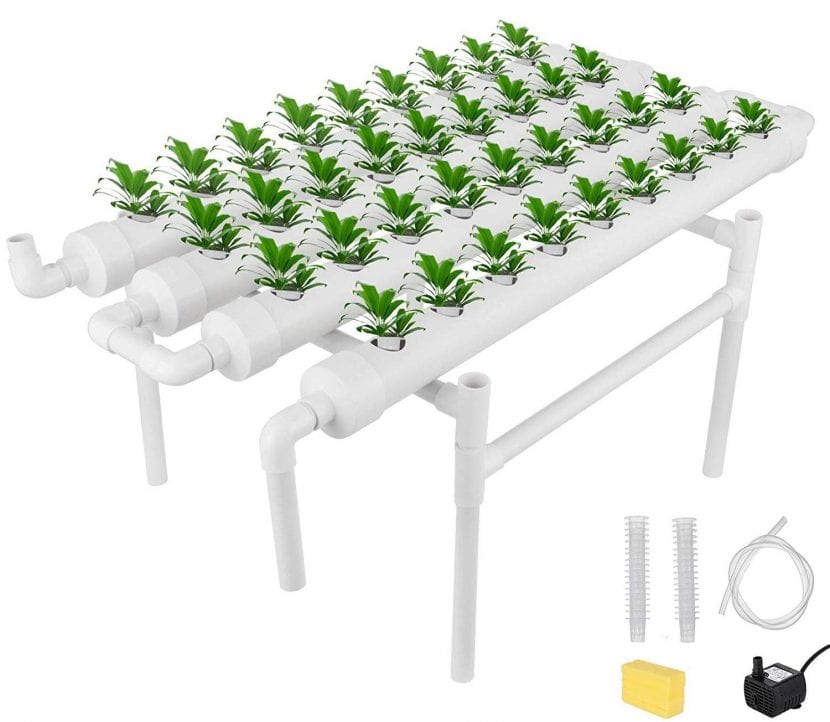
In this large online shopping center you will find a wide variety of hydroponic grow kits, at good prices, such as one with 36 holes made with PVC that is worth € 89,90 from the HUKOER brand and that you can get from here.
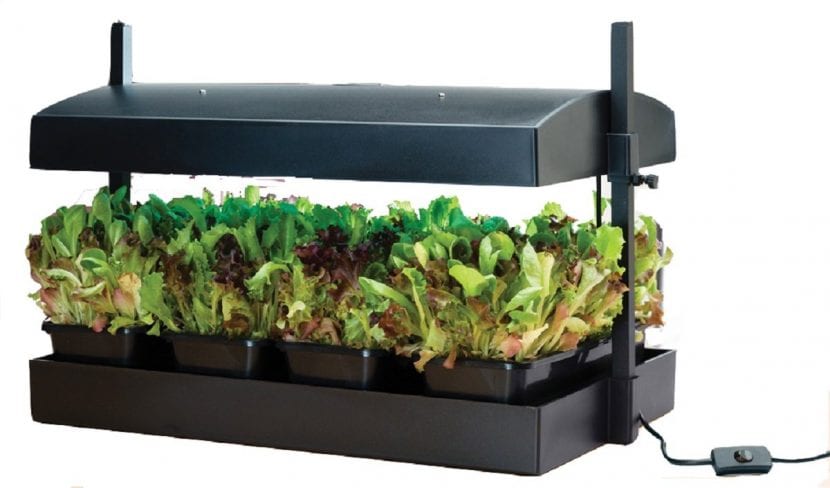
Or this other one, more compact and with a really nice design from the Garland brand, which measures 62 x 40 x 47cm, which costs € 93,61 and that you can buy here.
Likewise, you will find all the accessories and products necessary to grow your plants with these systems.
Specialized stores
Buying in stores specialized in hydroponics is a very good option, since any employee will be able to solve all the doubts you have at the moment.
And with this we are done. We hope you have learned a lot about hydroponics and hydroponics, and are encouraged to try 🙂.
This news on lesser known options is always welcome. It was very interesting to read and reread what was offered on this site. Thank you very much for the good news. Makes you want to try.
We are glad that you found it interesting, Alicia 🙂